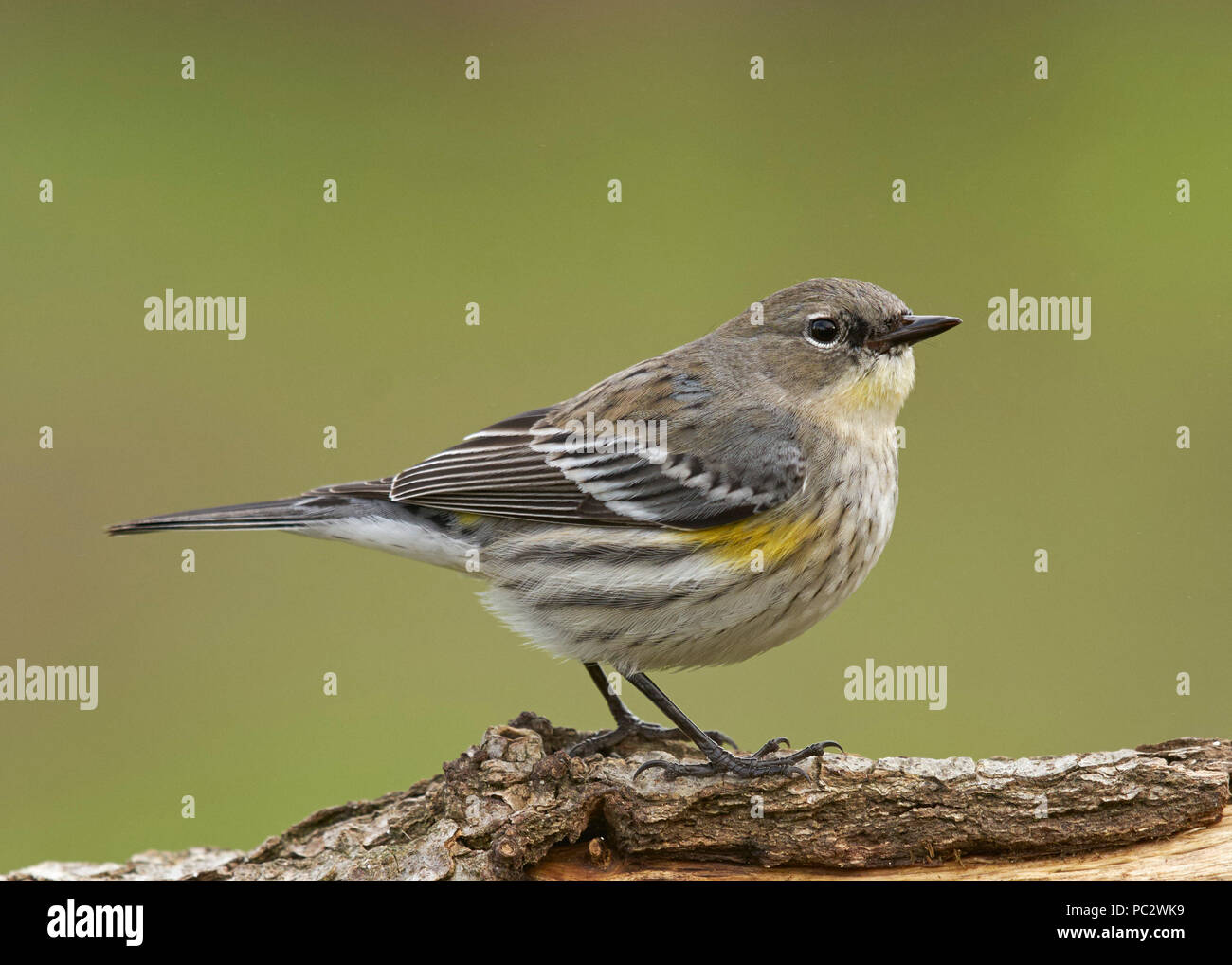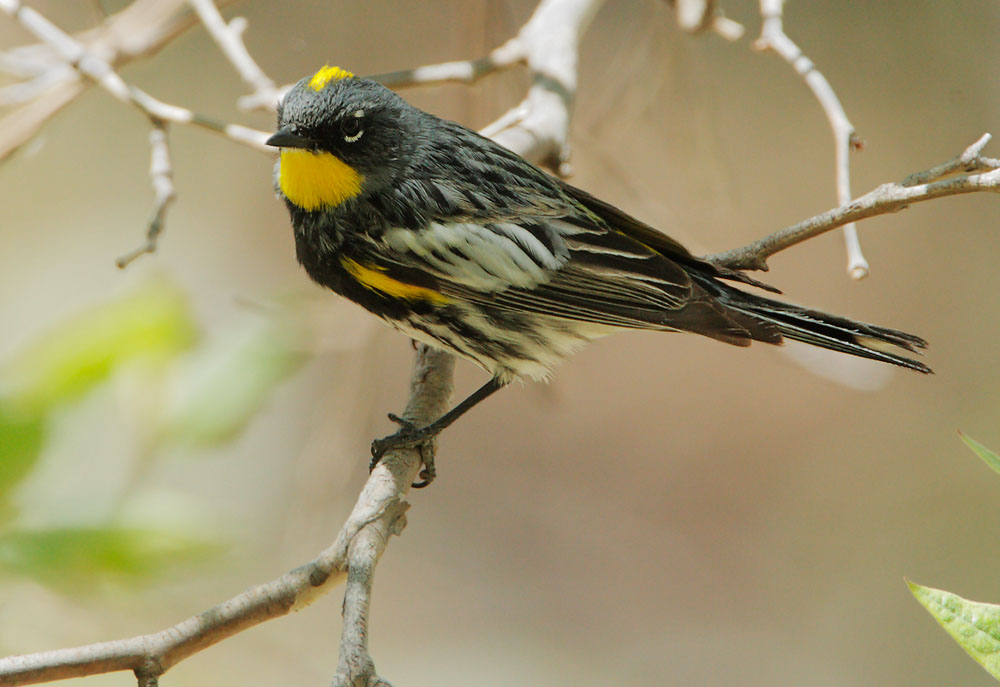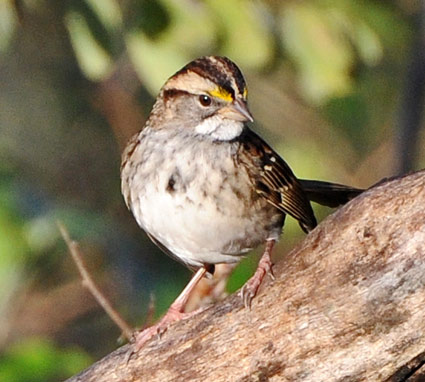
This species is particularly fond of poison ivy berries. Switching from a diet of insects to one of fruit and seeds helps the birds manage to find enough to eat during the lean months.
The yellow-rumped warbler is one of the few warblers that attempts to reside in the region during the winter months. Just look for natural places with lots of berries, and sooner or later you will see flashes of yellow among the juicy fruit. Head outside and enjoy the sight of some yellow-rumps around New York Harbor this fall and winter. The birds often appear to be in constant motion, seeking an abundance of berries, especially their favorite and most important source of food – bayberries. They travel in small flocks often flying from branch to branch to forage for food. Regardless of which yellow-rump you observe, this hardy bird is less driven by cold temperatures then by the lack of berries. According to the Cornell Lab of Ornithology, the "Myrtle" form is often found in the eastern United States and Canada's boreal forest, while the "Audubon’s" form is found in the mountainous West. Today, due to genetic testing many ornithologists suggest there are at least six separate sub-species of yellow-rumps in two groups. Yellow-rumps’ ability to switch diets from insects to berries has contributed to one of their earlier names, the myrtle warbler, because many yellow-rumps were so often observed eating the berries of wax myrtle trees or shrubs. The special winter diet of a yellow-rump has afforded this bird the ability to enjoy a leisurely migration later in the fall and to arrive earlier to breeding sites in the spring. Up to two-thirds of the diet for most warblers may be various species of caterpillars, which frequently start to overwinter in October. Yellow-rumps have a clear advantage over many of their warbler cousins, including yellow warblers and black-and-white warblers, who have to use more energy to habitually leave early and to fly long-distances to reach woodlands in Florida, the West Indies or South America before cold winds up north blow and take away an important source of food – insects. “These areas are powerful magnets for migratory birds including the Yellow-rumped warbler.” According to the NJ Sea Grant Consortium, around New York Harbor, a few of the most popular places to spot this bird include Sandy Hook, New Jersey (where some winter as well) to New York’s Central, Prospect and Jacob Riis Parks, and Jamaica Bay. Winter survival tactics of yellow-rumped warblers have allowed breeding and wintering populations to become sound and secure, and also abundant. The birds have adapted so well to eating a variety of fruit that yellow-rumped warblers are the best-known winter warbler not only around New York Harbor, but North America. None of these berries are very desirable for humans, but yellow-rumps are able to pluck them and eat them like grapes, one at a time. These berries have oil inside and offer many of the calories in the yellow-rumped warbler’s diet they need to survive during a long cold winter. 
Yellow-rumps have special enzymes in their stomach to digest waxy berries including juniper, cedar, Virginia creeper, poison ivy, and even the extremely waxy berries of bayberry. Unlike most warblers that migrate to faraway tropical locations for the winter, yellow-rumped warblers overwinter in North America, as far north as New England. Come fall they migrate south to open woodlands, gardens, and even thickets near the beach. Yellow-rumps breed in conifer forests up north during the summer. As their name suggests, this warbler always seems to be flashing its yellow rump of feathers near the base of its tail as the bird flies or moves about the trees and shrubs around New York Harbor. Yellow-rumped warblers are relatively easy small birds to recognize. The bird is one of the last warblers to migrate in fall, remaining in northernmost breeding areas well into October.


Yellow-rumped warblers are migrating now. Just like people, I suppose they were taking advantage of the sunny and unseasonably warm late October day to rest and refuel before the onset of Sunday’s strong wind and flooding rainstorm.

If you took a walk like I did last Saturday at Sandy Hook in New Jersey, part of Gateway National Recreation Area and located near the entrance to New York Harbor, you would have noticed small little songbirds flying about the shrubs and trees.








 0 kommentar(er)
0 kommentar(er)
